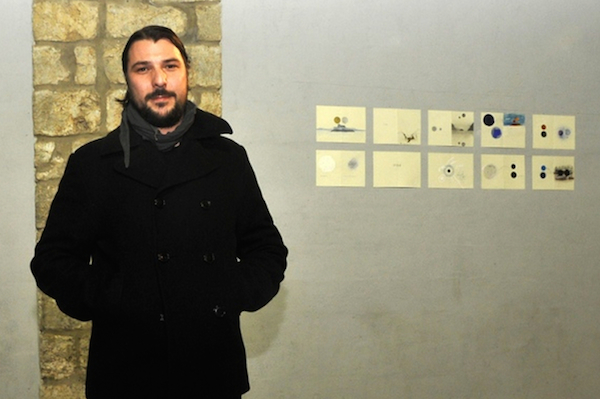Art
Marko Tadić discusses his latest series of work
Following a successful presentation at Pulse Art Fair NY, at which he was selected as one of four Pulse Prize finalists, Marko Tadić speaks to us about his most recent series of work, Accumulation of Images from Below.
Can you tell us more about the central theme of the series and the origins of the title, Accumulation of Images from Below?
The title refers to Gordon Matta Clark and his commentary on his first view from top in the cut-up house he made in Paris. He said he had lost his sense of plan and gravity. It had just looked as if he was looking in a pool. These works can be seen from that view-point, with a changed perspective from time and the meantime development of ideas in art and architecture. Here, I am not trying to glorify the modernistic period, but the visual archive I created here is to be criticized and discussed upon. It is a sort of a platform that is trying to summon and connect the state of ideas today. It is, after all a big part of our common past and has influenced us as people and individuals a great lot.
Your work combines collage using found objects, with drawing and painting. When beginning to work on a piece, how do you decide which techniques to use?
It depends on the idea. First, I try to use all kinds of materials and see which works better and which medium would be best for the representation of the idea I work on. Drawing is very important to me and it helps me focus and come to certain conclusions through work. In the end the work turns into this elaborate visual study, examined through many mediums, from drawing, collage to animation and pure text. Working like this helps me elaborate the idea, and I do not refer here just to the visual part of the work, but also to the literary, ethical and philosophical problems around and inside the work itself.
Several of your pieces depict domestic or interior scenes. Do these refer to real or imaginary subjects?
These scenes are imaginary places that seem very familiar to us because of the visual language they have been told through. The subjects of these drawings, collages and paintings speak about an existing gap between the theoretical and the everyday practice. They are actually subtly eerie and void of human existence, as if showing that the man has removed himself from his own creation by forgetting the original values and ideas that stand behind our society and civilization.
You have created several “Backgrounds”. Can you tell us about the inspiration for these pieces and why you chose to give them such ambiguous titles?
The ‘Backgrounds’ are literally backgrounds for my upcoming animation, yet the title functions both ways. These are backgrounds for ideas, a platform for new ideas to come forth and show new solutions. The platforms for an animated object show us what else is also possible, they give us the freedom to fill them in with new meanings.
The work featured in the Accumulation of Images from Below series is predominantly small in size. Do you always work in this scale?
All my work starts as a study, that’s why all the works are small in size. They become documents that help me solve the problem. By accumulation, the work becomes almost literary and can be read through like a proper anthropological study. It is a bit experimental in its narration, but we read through the work as we unfold the pages in the space. That is why many of my works when exhibited in a gallery have a certain museum-like atmosphere. They transform the clean space of a gallery in a sort of ‘wunderkammer’, in which we read the work through visual elements.
Some of your work from this series seems to reference specific modern art and mid- century modern design ideas. Was this intentional? Is this the type of art you most identify with?
The references here are to that period, that’s why I use the same visual solutions. In my work these have been rid of certain ideas and elements to show the huge difference in perception of art and world in general, they show the immense cognitive void in collective consciousness that came to be in the last couple of decades.
Your animations are playful and complex, can you tell us how they relate to your other 2-D work?
With animations I show the existence of the freedom of ideas and freedom of expression. They are done in the most simple of all animation techniques – stop frame animation. Through this time period in which I work on the animation I further explore the idea at hand and go deeper into the problematics of both the idea and the animation techniques. Animation helps me give [the work] a fourth dimension and it is almost educational, while at the same time being narrative through simple movements of various objects in space. Usually it is the last part of work in which we can see my story or interpretation unfold also through movement.
Image credit: John Tutnjević







